The last two methods of planting native landscapes from seed that I’d like to cover are Broadcast Sowing and Frost Seeding. At the moment I can only think of one area I’ll be able to try Broadcast Sowing but we’re in the wrong season and I’m not ready to work over there yet so that will have to wait. I’ve got a perfect spot for Frost Seeding though so I’ll describe how I did that later in this article.
Sourcing Your Seeds
I’ve described how to choose your seed supplier in this article and I think this article needs a special note before I get into it. Both Broadcast Sowing and Frost Sowing lend themselves well to the use of seed mixes to create meadow or cottage-like gardens. When you’re looking for seed mixes please read the package before purchasing.
Many commercial seed mixes will contain a high percentage of non-native – and possibly invasive to your area – species. This is where using a local seed producer like Northern Wildflowers is really important. Still, check the label to make sure their seed mix is right for your location.
I recommend purchasing individual seed varieties that are suited to your location and mixing them yourself. Often your local library, native seed bank or field naturalist group will have local, native seeds available so that’s worth checking out too. Now, back on topic …
What is Broadcast Sowing?
Broadcast sowing, also known as scattering or hand sowing, involves simply scattering seeds by hand or using a handheld spreader on top of the soil surface without preparing rows, holes or furrows. After sowing, the seeds are lightly raked, tamped or covered with soil to ensure good seed-to-soil contact, which aids in germination and seedling establishment. This method seems to be best used with seeds that don’t require cold stratification and can be done during the regular growing season. Here is a great video that explains the process.
Benefits of Broadcast Sowing
Cost-effective: Broadcast sowing requires minimal to no special tools and seed is inexpensive compared to purchasing seedlings or established plants from a nursery.
Simplicity and Efficiency: Broadcast sowing is a straightforward and efficient method of planting seeds, requiring minimal equipment and expertise. It is particularly well-suited for small gardens or areas where precise row planting is not necessary.
Soil protection: Unlike planting in rows, or digging large work areas where soil is often disturbed extensively, broadcast sowing helps maintain soil structure and reduces erosion. The seeds are scattered over the soil surface, minimizing soil disturbance and preserving soil health.
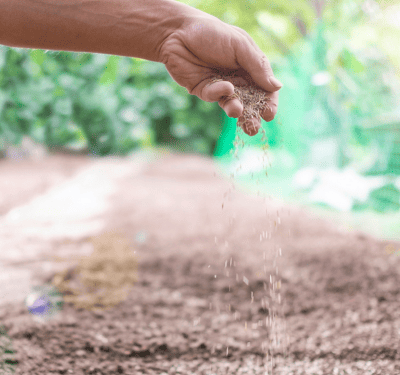
Disadvantages of Broadcast Sowing
Wasted Seed: One of the main drawbacks of broadcast sowing is the potential for seed wastage. Since seeds are scattered over a wide area, some may be blown off course and land in less favorable conditions or be eaten by birds or insects before germination. This can result in lower overall germination rates and require additional seed to achieve desired plant density.
Lack of precision: Unlike row or direct planting, where seeds are placed at specific intervals and depths, broadcast sowing lacks precision. It can be challenging to control seed placement and spacing accurately, which may result in overcrowding or uneven growth.
Limited to certain plant varieties: While broadcast sowing is suitable for many plant varieties, it may not be ideal for species that require precise spacing or depth, such as those with large-seeds or those that require very specific conditions for germination.
Difficulty in thinning: Thinning, the process of removing excess seedlings to achieve proper spacing, can be more challenging (and discouraging) with broadcast-sown crops. This can lead to overcrowding and failure for seedlings to survive.
What is Frost Seeding?
Frost seeding is a technique utilized in gardening and ecological restoration, particularly for sowing native plant seeds. It involves broadcasting seeds directly on top of the snow during late winter or early spring, allowing them to naturally stratify over the cold season. This process mimics the natural cycles many native plants undergo in the wild. In nature, seeds are dispersed as the season progresses, then get lowered to the soil through natural freeze/thaw cycles, and germinate when conditions become favorable in the spring.
Advantages of Frost Seeding
Labour and Cost Efficient: Like broadcast sowing, frost seeding requires no special equipment or skill to apply. It also harnesses the cost savings of purchasing seed rather than nursery stock. It’s also a very effective way to create plant communities on a budget.
Scalable: While this process can easily be used to create small gardens, it’s a fantastic method of covering large areas for restoration projects. It’s so good for covering large areas that farmers will often employ this method to reinvigorate pastures.
More Reliable Moisture Availability: Using the freeze/thaw of ice and snow helps to ensure adequate moisture levels in the soil. This can promote seed germination and early seedling establishment. I’ve even read that it can create plants that require little or no watering during the drier months of the year. Perhaps that’s why it’s used by farmers and large scale restoration projects that don’t have ready access to that much water.
It Feels Good: Let’s not discount the psychological benefits of getting outside to do something that feels like gardening before you can really get your hands into it in the spring. It reconnects you with your landscape and makes you feel good to be doing good for your ecosystem.
Disadvantages of Frost Sowing:
Seed Loss: Since seed is sown directly on top of the snow, some seed can get blown away and some can be eaten by birds and other creatures.
Timing is Crucial: Seeds need sufficient time to undergo stratification before germination. Late winter or early spring is typically chosen to take advantage of freezing and thawing cycles that help break seed dormancy. While I don’t think it’s possible to frost seed too early, it seems very possible to do it too late.
Why I Wanted to Try Frost Seeding:
As noted in my Direct Sowing post, I have a significant amount of ground to cover around the perimeter of our clearing. I feel like I’ve got the space to try a number of seed sowing methods and basically, I’m just really curious to see what happens!
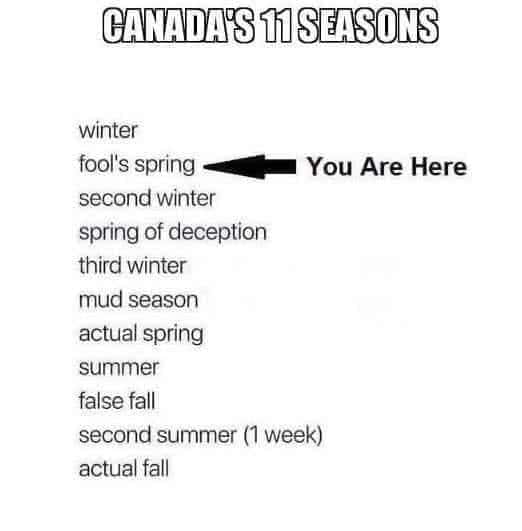
As it turns out, we’re experiencing an unusually warm winter and what looks like very early spring-like conditions. Today is March 3 and it’s 9℃ here on the Bruce Peninsula. I think yesterday was even a little warmer than that. I knew I had to get my remaining seeds on the ground immediately if I had any hope of successful germination this year.
The area I wanted to try frost seeding native plant seeds is at the edge of the clearing, on a slope that faces east. It’s basically the only spot that still has snow on it so, in theory, the ground should remain cold enough to give the seeds a chance at winter stratification.
Why I Couldn’t Do a Strictly Frost Seeding Method:
Frankly, I didn’t have the heart to take these precious seeds, many of which had been given to me by a Cottage Wife Reader, and cast them to the wind. I just couldn’t risk losing the seed to wind, birds and other critters or to fate. Even though I knew I was already pushing the limits on the timing, I couldn’t reduce the seeds’ chances any more. I just couldn’t do it!
What I did instead of Frost Seeding my native seeds:
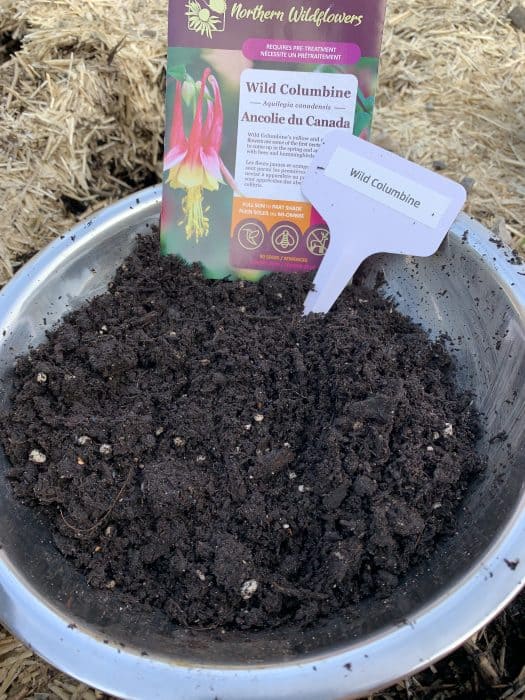
For one set of seeds I started by using my Direct Sowing method. I quickly realized though that with the number of seeds I had left, I probably didn’t have enough thawed soil for mixing or enough time left in the day to do this with everything. Here’s what I did instead.
- Make the seed/soil mixture: I dumped all the seeds I had left into a big bowl of topsoil. Then I hand mixed it all together for a good few minutes. I probably didn’t have to do it that long but it felt so good to have my hands in “dirt” again.
- Dig out the snow and vegetation until I can see bare ground:
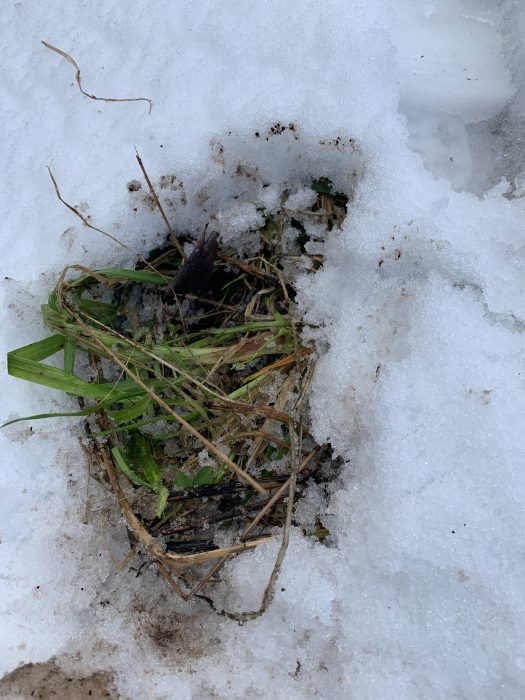
- Place a few handfuls of the seed/soil mixture into the space I’d made
- Cover it back up with the vegetation and pack snow back on top:
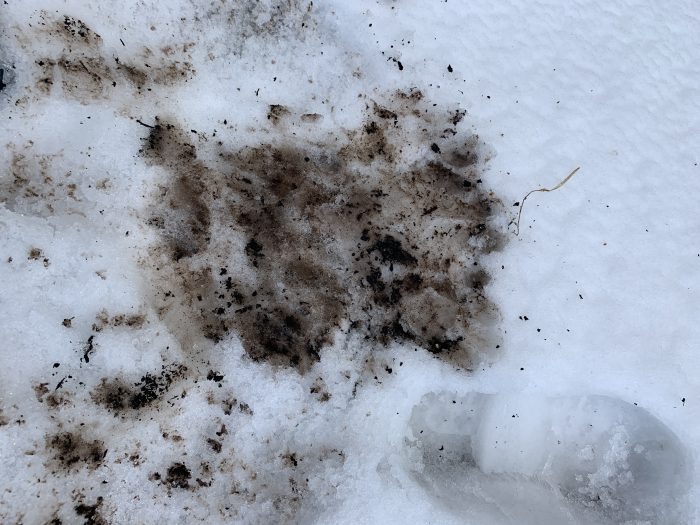
- Wish the little seeds well, that they sprout into hearty seedlings and good strong plants. Yes, again, I know it’s corny but that’s how I roll sometimes.
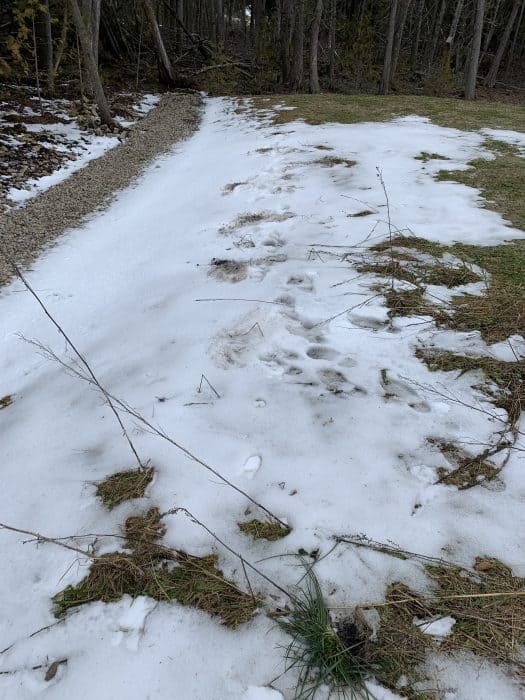
With this method I planted:
| Plant | Status | Note |
| Swamp Vervain Verbena hastata | Uncommon | aka Blue Vervain |
| Common Milkweed Asclepias syriaca | Common | |
| Small Fringed Gentian Gentianopsis virgata ssp. virgata | Common | |
| Tall Meadow Rue Thalictrum pubescens | Common | |
| Indian Paintbrush Castilleja coccinea | Common | |
| Grey- Headed Coneflower Ratibida pinnata | Unknown | Status not indicated in local vascular plant list |
| Cardinal Flower Lobelia cardinalis | Common | |
| Giant Yellow Hyssop Agastache nepetoides | Unknown | Status not indicated in local vascular plant list |
| Blazing Star Liatris spicata | Unknown | Status not indicated in local vascular plant list |
| Foxglove Beardtongue Penstemon digitalis | Introduced/Rare | |
| Evening Primrose Oenothera bienni’s | Common | |
| Wild Columbine Aquilegia canadensis | Common |
And now I wait! Even though the conditions might not be ideal, I have better faith that they’ll survive. I have such faith because they are native plants whose ancestors have centuries of experience with the variations within our, sometimes extreme, Ontario climate.
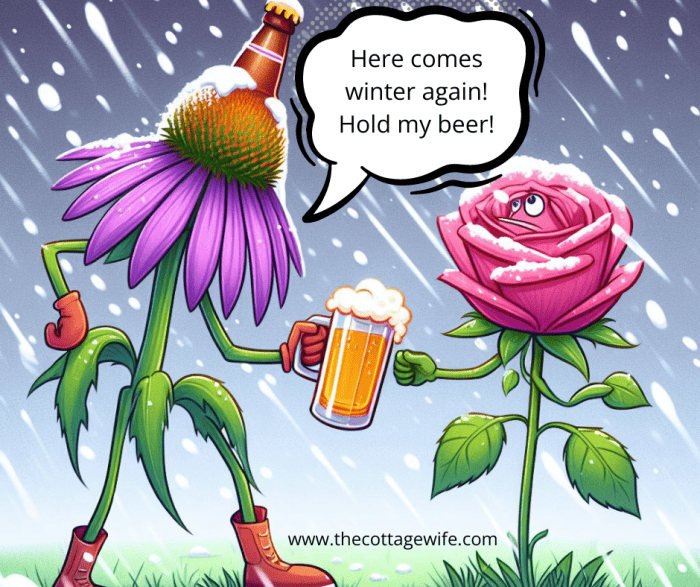
Recent Posts
7 Totally Selfish Reasons to Choose Native Plants for Your Gardens
Grab a cup (or glass) of your favorite beverage, and let's delve into what I’ve learned so far about why it's incredibly important and wildly selfish to embrace landscaping with locally native...
Winter sowing is a seed starting method where you sow your seeds in a sheltered container, and set them outside for the winter, here I'll show you how it's done.
